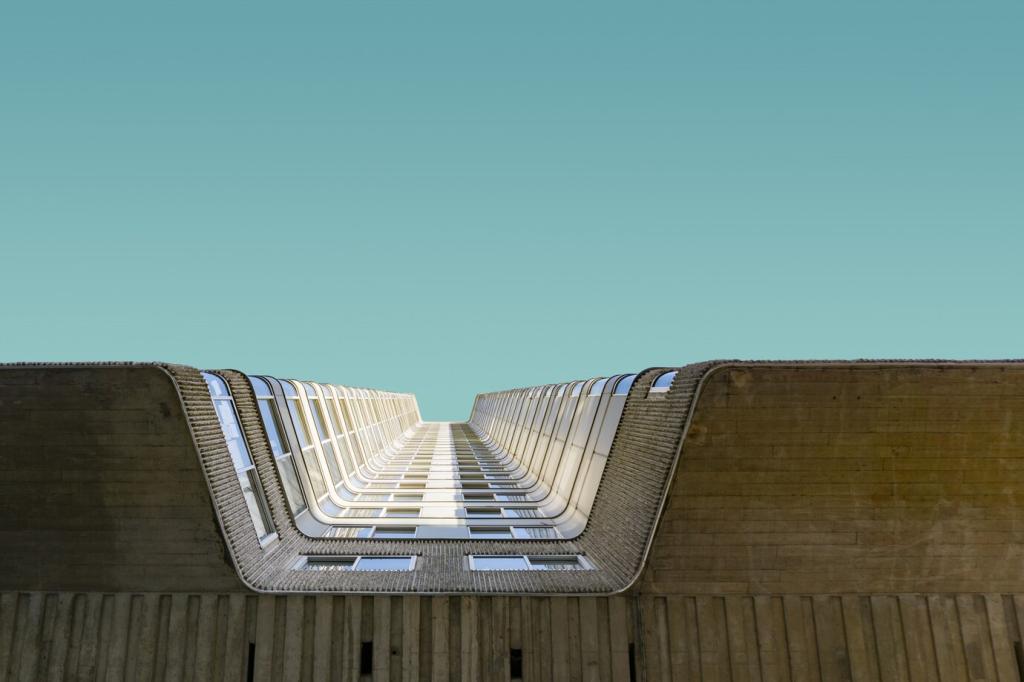The Role of Technology in Architectural Innovations
Technology has consistently shaped the evolution of architecture, pushing boundaries and redefining the way buildings are conceived, constructed, and experienced. Modern advancements have enabled architects to explore unprecedented design possibilities, enhance building efficiency, and respond dynamically to environmental and societal needs. The intersection of technology and architecture continues to inspire creative solutions and drive transformative innovations in the built environment.
Digital Design and Visualization Tools
Building Information Modeling (BIM)
Building Information Modeling, or BIM, represents a significant leap forward in how architects create, manage, and share building data throughout a project’s lifecycle. Unlike traditional 2D drafting, BIM allows architects to generate comprehensive 3D models that incorporate not only geometry but also critical information such as materials, costs, and performance parameters. This holistic digital representation fosters greater collaboration among stakeholders and improves decision-making by visualizing outcomes before construction begins. Furthermore, BIM significantly improves efficiency by identifying potential clashes and errors early in the process, minimizing costly rework and delays. The integration of BIM is now considered essential for complex architectural projects and continues to evolve as a central pillar in industry innovation.


Advanced Rendering and Virtual Reality
Architectural visualization has been transformed by advanced rendering technologies and immersive virtual reality experiences. Detailed photorealistic renders offer clients and project teams an accurate visualization of the proposed design, allowing them to better understand the spatial qualities, lighting, and material choices. Virtual reality takes this a step further by enabling users to “walk through” virtual building environments, experiencing spaces at full scale before they are built. This immersive approach aids in refining designs, enhancing presentations, and ensuring that clients’ expectations align with the architect’s vision. The adoption of these tools accelerates the design approval process, facilitates feedback, and reduces misunderstandings at an early stage.
Innovations in Construction Techniques
3D Printing in Architecture
3D printing has introduced a revolutionary approach to constructing both architectural components and entire buildings. By layering materials precisely according to digital models, 3D printing enables the creation of complex geometries and customized elements that would be labor-intensive or impossible by hand. The technology reduces material waste, labor costs, and construction time, making it a compelling option for prefabricated homes, emergency shelters, and customizable building components. Recent advances have seen 3D-printed houses emerge as sustainable and affordable solutions for housing shortages, marking a significant step toward the future of construction.
Robotics and Automation
The integration of robotics and automation in construction has transformed how structures are assembled, leading to increased accuracy and reduced risks on site. Robotic arms now handle tasks such as bricklaying, concrete pouring, and facade installation, performing repetitive or hazardous jobs with unmatched precision and speed. Automation also extends to modular construction techniques, where building modules are fabricated off-site and then assembled on location. This industrialization of the construction process can significantly shorten timelines, improve safety, and ensure higher quality control while freeing human workers to focus on complex problem-solving and creative tasks.
Smart Building Materials
The development of advanced building materials—enabled by technological progress—has brought forth more resilient, sustainable, and efficient structures. Innovations such as self-healing concrete, high-performance glass, and phase-changing materials enhance a building’s lifespan, performance, and environmental responsiveness. For instance, materials embedded with sensors can monitor structural health in real time, providing critical data to inform maintenance and safety decisions. These smart materials not only improve building durability but also support architects in achieving higher standards for sustainability and occupant well-being.

Energy modeling and analysis tools empower architects to predict, measure, and optimize a building’s energy performance before construction begins. Using real-world data and simulation engines, these tools assess factors such as daylighting, thermal comfort, and energy consumption across different design scenarios. By modeling complex interactions between a building and its environment, designers can make informed decisions that lead to higher efficiency and reduced emissions. Such proactive design processes are crucial in achieving stringent green building certifications and advancing the goals of sustainable architecture.

Smart building systems leverage technology to create responsive, automated environments where lighting, HVAC, and security adapt to occupant needs in real time. Integrating sensors and control systems, buildings can monitor occupancy, weather, and usage patterns, adjusting their operations to minimize waste and enhance comfort. These intelligent systems not only result in significant energy savings but also improve occupant health, safety, and convenience. The data collected by smart systems further allows continuous refinement of building performance and provides invaluable insights for future designs.

Architectural facades are evolving from static envelopes to dynamic, adaptive systems capable of responding to external conditions. Technologies such as operable louvers, kinetic shading devices, and electrochromic glass actively manage heat gain, glare, and ventilation, optimizing comfort and reducing reliance on mechanical systems. These responsive facades can be programmed or self-regulate based on real-time environmental data, enhancing a building’s ability to adapt to shifting climates. As architects embrace these innovations, buildings become more resilient, sustainable, and integrated with their surroundings.
